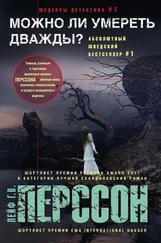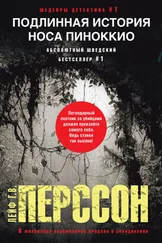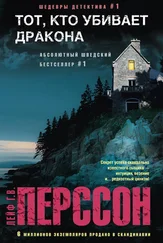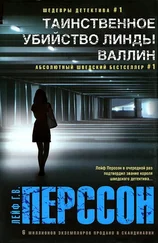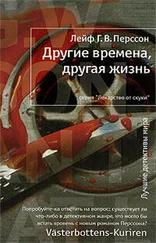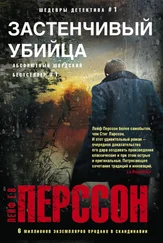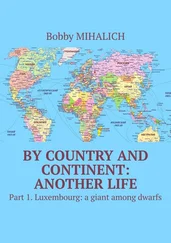“No,” said Jarnebring, getting up. “That doesn’t seem to have worked too well.” Or else the guys at SePo forgot to mention it to them, he thought.
“Yes, really,” said Stridh, moving his head and sounding mostly as though he was talking to himself. “I was thinking what Churchill used to say during the war...”
“Well,” said Jarnebring. “If you’ll excuse me—”
“Sure,” said Stridh, and he got up too. “I’m the one who should say excuse me for disturbing you during your break. What I was thinking of was what Churchill used to say: ‘He who is forewarned is also forearmed.’ ‘He who is forewarned is also forearmed,’ ” Stridh declaimed again. “Although that doesn’t seem to have applied to the Germans exactly,” he declared, shaking his head.
In the late 1980s the democracy movement within the Eastern Bloc quickly advanced in the Soviet Union, Poland, Czechoslovakia, and Hungary. East Germany was an exception. The head of state and leader of the East German Communist Party, Erich Honecker, stubbornly resisted all reform efforts, and when he lost the struggle, the final price that both he and his country had to pay was far higher than the toll paid by the countries that had previously been his allies.
The German Democratic Republic would soon cease to exist, the actual breakdown occurring at roughly the same time that the nation’s fortieth anniversary was being celebrated. The formal acknowledgment came less than a year later. October 3, 1990, marked the end of forty-one years as — officially anyway — an independent nation; after that the former GDR was transformed into five new states that were subsumed by the Federal Republic of Germany.
Honecker himself would die in exile in Chile on May 29, 1994, isolated, terminally ill with liver cancer, deprived of all political power, eighty-two years of age, in self-imposed exile on the other side of the globe. Honecker was from the Saar region, the son of a miner from Neunkirchen, where he was trained as a roofer and played shawm in the rock blasters’ wind orchestra. When the Nazis marched into the Saar in 1935, the twenty-three-year-old communist had been forced to flee for the first time. That time he ended up in Paris. His last journey was considerably longer than that.
In retrospect, in the pale glow of the night-light of history, Western historians and journalists have portrayed the fall of East Germany as the result of a gigantic information error committed by its leaders, a collection of hidebound old-line communists, desperate, blinkered, unable to comprehend the new world outside. Their spiritual father Karl Marx would certainly have dismissed this writing of history as idealistic, romanticized, and factually absurd — and he would have been completely correct — but considering what happened later this is also uninteresting. According to these Western observers — and it is well known that history is first written by the victors — it was “a little slip of paper that started the landslide rolling” ( Ein kleiner Zettel löst die Lawine aus ), to quote the headline of an article in Berliner Zeitung on the fifth anniversary of the fall of the Berlin Wall. The slip of paper in question was presented to the assembled world media at a press conference in Berlin, in connection with the meeting of the Central Committee, right before seven o’clock on Thursday evening the ninth of November 1989. According to the same story it had been delivered by Honecker’s successor Egon Krenz to the Politburo’s head of information Günter Schabowski just over an hour earlier, and before this much had happened that would have been more to Karl Marx’s taste had he been the one writing the historical description.
In May 1989 the Hungarians had started tearing down the barbed-wire fence along the 161-mile-long border with Austria. The fence that had divided Europe for three decades was torn down, and after that everything moved very quickly. It took less than six months to disperse the gloomy inheritance of the Second World War.
During the summer of 1989 the stream of refugees from East Germany increased dramatically. Thousands of East Germans traveled on vacation to Budapest and stayed a few days before the majority of them made their way farther via illegal routes into Austria and from there to West Germany and freedom in the capitalist paradise.
On August 19 Hungary opened one of its border crossings to Austria for a few hours, in order to temporarily ease the pressure, and during that time six hundred East Germans took the opportunity to leave the country and cross via Austria to West Germany. The border was then closed again, and for a few days returned to the old restrictions, with desperate attempts at flight, gunfire, and in the best cases refugees who were only wounded.
By the twenty-fifth of August the Hungarians had had enough, and the country’s prime minister announced that Hungary had decided to give all East Germans permission to leave the country. On the tenth of September Hungary then broke its agreement with East Germany, and in the ensuing weeks tens of thousands of East Germans traveled to West Germany via Hungary. The Soviet Union had in any event not raised any active objections. During the prior year, Gorbachev had instead talked about other matters, about the need for openness, renewal, and political reforms, and within the new Eastern Bloc the Hungarians’ decision was now seen as a welcome initiative.
At the same time Hungary was not the only way out. In the month of September thousands of East Germans also traveled to Czechoslovakia, where they sought asylum as political refugees at the West German embassy in Prague. At the end of September those who had taken refuge there were unexpectedly given exit permits to the Federal Republic, and within the course of a day four thousand traveled on to West Germany, which had always been their ultimate destination.
Then the landslide began. Before the end of the year more than half a million East Germans, 3 percent of the country’s population, had left for a new life in the West, and as so often before it was younger people who took the first step. It was the youth and thereby the hope of the future that had abandoned the fatherland.
The literal-minded may be wondering about that slip of paper. And what was it that actually happened at the meeting of the East German Central Committee on Thursday the ninth of November 1989?
The main issue at the meeting was a given, namely how they could gain control over the flight of the people to the West. What had been specifically discussed over the previous few months was a proposal from Wolfgang Herger, head of the security department within the East German Communist Party’s Central Committee, which contained two opposing alternatives. Either close the borders of the country to the outside world or grant every East German citizen the opportunity to apply for an exit visa on their passport, and thereby an opportunity to freely leave the country.
The proposal for the new travel edict was presented for the first time to the members of the Politburo during a break in the proceedings, between twelve o’clock and twelve-thirty on Thursday the ninth of November. During the afternoon it was agreed to let the proposal circulate among the members of the Council of Ministers as well, before being considered by the Central Committee. At four-thirty in the afternoon Egon Krenz read the proposal, there was a brief, rather confused discussion, some changes to the text were made on the spot, whereupon the proposal was accepted in its entirety and without qualifications.
At five-thirty the head of information, Schabowski, came into Krenz’s office to hear if there was anything in particular that Krenz wanted him to announce to the media at the press conference that was to begin in half an hour, and that to be on the safe side would also be broadcast live on East German TV.
Читать дальше

